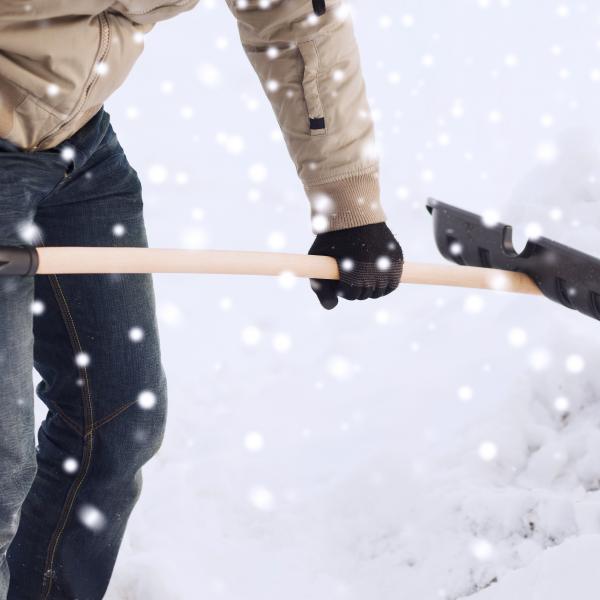
Every winter, those of us in the states that tend to get snow wonder whether we're going to get a lot or a little. No matter how much snow we end up getting though, it’s always good to know the proper way to shovel so injuries can be prevented. We at ATI Physical Therapy have some advice to help avoid those snow shoveling injuries
Stretch
Take 5–10 minutes to warm-up your muscles with some stretches before starting to shovel.

Hydrate
When it’s cold outside, many people don’t tend to feel as thirsty as they would normally. This can lead to dehydration if you’re not staying properly hydrated. Make sure to drink plenty of water before, during and after shoveling to stay hydrated and help avoid injuries. Caffeinated drinks and/or nicotine should also be avoided before shoveling, as they increase your heart rate and constrict blood vessels, which places strain on your heart.
Dress Properly
While shoveling may not be the first thing you think about when you hear the work exercise, it can definitely be considered exercise. Exercising generates heat and makes it feel like it’s warmer than it really is outside. Dressing too warmly can be a mistake, so you want to dress in layers that you can remove and put back on as needed. Cover your head and hands to help maintain your core body temperature. In addition to keeping your hands warm, a good pair of gloves can even give you a better grip on the shovel which will cause less fatigue on your wrists and hands. To decrease your chances of slipping or falling, wear a pair of rubber soled boots with good traction.
Use Good Form
The main causes of injury when shoveling snow tend to be excessive bending, twisting and lifting heavy loads. To help avoid an injury, push the snow instead of lifting and throwing it. Using a lighter plastic shovel instead of a metal one can help to lessen your load. If lifting the snow is a necessity, improve your leverage by keeping space between your hands when grasping the handle. Use your arms and legs, not your back, to move the snow. For balance, stand with your feet shoulder width apart. Keep your back straight to avoid bending at your waist, and always bend with your knees.
Pace Yourself
Shoveling snow is a lot of work! On average, a shovel full of snow can weigh in excess of ten pounds. Multiply that by the amount of snow you’re shoveling and that’s a lot of weight. When dealing with large amounts of snow, shovel smaller loads and give yourself a break about every 15 minutes.
Know your Limits
Harvard Health Publications recommends that those who are out of shape, have heart conditions, or who are over the age of 50 should not shovel snow. While shoveling, if you experience pain, shortness of breath, tightness in your chest, or feel lightheaded, stop shoveling immediately! Try using the buddy system when shoveling; you can take turns shoveling and taking breaks and it’s good to have another person around in case you need help.
Injured While Shoveling?
If you do sustain an injury while shoveling, ATI Physical Therapy offers complimentary injury screenings at every location. Schedule your screen or stop by any clinic today!
